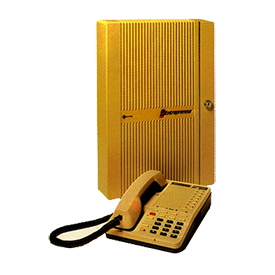 |
Made by MITEL the Entrepreneur is an analogue switch of maximum 4+10 capacity. Trunks are added in pairs. The system supports Pots (MF and LD) and Entrepreneur keyphones. The trunks and private wire cards are the same as the MITEL SX10/SX20 range. The system is programmed from the first extension port, the telephone being a POT or Featurephone. Earlier firmware did not support private wire trunks. Entrepreneur Electronic Set (Loop Limit = 152m (500ft) |
 |
Fifty percent of all businesses can be satisfied by a communications system that offers up to 6 extensions and two outside lines. The Mitel SX5 is that system. After thorough research of this most cost-sensitive market, Mitel created the SX5. It combines maximum performance and economy in a compact, stylish package. For users as diverse as restaurants, garages, small professional offices, residences and many more, the SX5 is the complete communications system. Better dm competitive initial and ongoing costs ensure excellent economy with unsurpassed performance. The SX5 uses standard DTMF and/or rotary dial telephones with 2 wire cabling. The SX5 features low power consumption, system battery backup. No special operating environment is required. Minimal programming allows quick and easy loading of location dependent information. Simple terminal strip connections and no hardware configuration reduction and maintenance time to just minutes. The same replaceable extension circuits and trunk modules as the SX10, Super 10 and SX20 provide inventory and training savings. The SX5 has a wide range of features that control communication expenses and increase user efficiency. For instance, immediate response to incoming calls is guaranteed with the innovative Common Audible Ringing feature, which allows a number of extensions to answer simply by going off-hook. Flexible Toll Restriction controls long distance calling. Powerful call handling features such as Transfer, Conference, Call Forwarding and Paging are available at every extension. Incoming callers think big business when they hear Music-on-Hold. Where desired, an extension can be given private line service, with no loss of, other features, using Direct-In-line. In addition, Tone to Pulse Conversion and much more are standard with every SX5. SX-5 TECHNICAL SUMMARY Technology: Stored Program, Microprocessor Controlled |
|
|
The Mitel SX10 (shown below with console) and SX10E (shown right with superset 4) is a LD/MF analogue switch with a maximum configuration of 8+24 (SX10) and 8+32 or 8+24 (SX10E). The SX10 was introduced around 1982, used a Remote Display Unit instead of a console (introduced late 1983) and had a metal cover surrounding the PSU and card mounting. The SX10E superseded the SX10 in 1985, and was fitted with a plastic, ribbed cover and used software variant 143, which supported supersets (up to 24), call logging and 60 memory abbreviated dialling. Both variants have 8 speech paths and system architecture is Stored Programme Control (SPC). Made by Mitel, the equipment was sold by a number of companies under different names. The SX10 and SX10E were wall mounted and used the SX20 console or a small LCD display for indication purposes. The main cabinet contains:A Mastercard II which carries SLICs for 8 extensions, tone generators and receivers and the Firmware Module. It may also include 1 or 2 Trunk Modules (2 trunks each) and a Communicator Module which allows SS4 Feature phones to be connected to this card. A System Expander Card which carries SLICs for either 8, 16 or 24 further extensions, tone receivers and optionally, 2 more Trunk Modules can also be installed in the system. Trunk Module’s may be standard loop disconnect modules (switchable for Loop or Earth calling) or SSAC15a modules or SSDC5 (E & M) modules. The system may also include a Remote Call Status Display. The SX10E can handle a maximum of eight simultaneous calls. The maximum capacity of the system is:- 8 Trunks and 32 Extensions of which up to 8 may be SS4 Feature phones (143 variant only). The British Telecom version of the SX10/SX10E had a wall mounted PSU and MDF. The equipment cards were housed in a black console (similar design to a Monarch console). This system was called the Viceroy/Super 10 and had a restricted capacity of 8+16. The PSU and card frame are separate, but are both mounted on the same wall plate. An integral battery may be fitted within the PSU and this will maintain the system power for up to 45 minutes. The card frame accepts two cards and each card will support 4 trunks (2 x 2 cct) each. 240V 50Hz mains voltage is converted in the power supply unit to the voltages required by the system. In the event of a mains failure the SX10E has a 90 minute back-up battery. System configuration is maintained, in the event of a complete power failure by the use of battery supported RAM. The PSU is rated at 60 watts and weighs 20 lbs. After a mains failure and exhaustion of the battery back-up power the first two extension equipment numbers are connected to the public network. A 27V dc feed is supplied to extension telephone instruments. ConfigurationThe system cabinet fixes to the wall and uses a separate console that can be positioned away from the cabinet. This console is also used by the Mitel SX20. The Master Card (CPU board) has 8 extension ports and provision for 2 trunk cards. Additional ports are added by installing a 8, 16 or 24 port extension cards. These cards have provision for 2 trunk or 2 private circuit cards. A Remote Display Unit must be fitted for programming purposes, if no console is provided. Featurephones can only be used on 143 variants with Mastercard 2. Remote Display Unit
|
|
|
The SX20 was made by Mitel and marketed by many companies as the SX20, except BT who called it the Kinsman. The console is the same one used by the Mitel SX10E and although similar looking to that of the SX200 it is incompatible. The system will support LD and MF telephones with either earth or timed break recall. The Kinsman was withdrawn from BT’s portfolio in 1988.CAPACITY The SX20 has a maximum configuration of 12 exchange lines and 72 extensions. These cannot be achieved at the same time due to the structure of the system and the real configuration could be described as either a maximum of 8+72 or 12+48 (this is described fully in the next chapter). The Superset 4 featurephone and 60 store repertory dial is only supported on software generic 543. A visually handicapped operator console is also available.A Remote Display Unit and standard POT telephone can used instead of the Console.The Mitel SX20 is an analogue, stored Programme Control (SPC) PABX employing Solid state space-division switching. Much of the equipment incorporated in the SX20 system is common with other Mitel products. The system consists of a metal Chassis and an impact-resistant plastic cover. Simultaneous use of MF4, Rotary Dial and SuperSet 4 Featurephones is possible. with the use of MF4 or Rotary Dial phones being possible on any of the lines, Supersets, however can only be used on selected lines. Automatic Diagnostics execute self checks of the system. Detected faults raise audio and visual alarms. 240V 50hz Mains voltage is converted in the power supply unit to the voltages required by the system.After a mains failure and exhaustion of the battery back-up power three extensions are connected to the public network, two automatically the third manually (See section on Equipment Provision Rules), under these conditions only Rotary Dial Telephones will function, unless the local exchange is capable of receiving MF4 digits, when MF4 telephones may be used. SuperSets will NOT function during total power fail conditions. A 27v dc feed is supplied to extension telephone instruments.The PABX can be used as a host or subsidiary system in accordance with DTI specification 84/011. Where used as a subsidiary, there may be a limited number of facilities available between the two systems. |
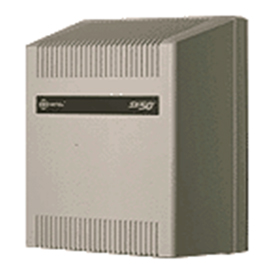 |
First made by Mitel in 1985 this switch was originally called the SX500, with BT naming it the Dekara. In 1986 the system was renamed as the Mitel SX50 and the BT TSX50. The SX 50 is a micro processor controlled switching system that uses a digital switching matrix for the connection of calls. TSX 50 was released in 1987 with Generic 3543.02 (UK1) software. The introduction of Generic 3543.03 (UK2) software in May 1989 allows the use of a Visually Handicapped Operators Console (VHOC) attachment and, with a new power supply PSU2A increased system capacity from 80 to 160 ports. System capacity will depend on the type of power supply unit (PSU 1A or PSU 2A) – see table below. Note that the quoted capacities cannot all be achieved at the same time, due to a limitation of 10 interface card slots per system. In 1994 DASS2 connectivity was announced and this used the Interconnect 200 box in conjunction with the SX50 DNC card (which supported DPNSS). It is debatable whether BT sold any. The system could be fitted with Superset 4, Superset 400 type telephones or one switchboard. |
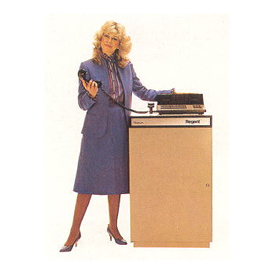 |
The SX200 is 256 port Call Connect System (CCS), of which 184 ports are available for assignment to extensions, trunks and private circuits (the remainder are used for receivers, special functions and the common control). The systems capacity depends on how these ports are used, as an extension uses one port, a trunk uses two ports and a private circuit uses four ports. The maximum size of the system is actually 24+134. Regent is an SPC switch utilising CMOS switching and a MC6800 CPU supported by 8k of RAM. The generic (system operating programme) is stored in 56K of programmable ROM and there is also 4K of battery backed up RAM that contains access code and extension information. The system is housed in a floor standing cabinet of size 960 mm high, 600 mm wide and 700 mm deep and weighing 132 kg when fully equipped. Various generics are approved:- Extension cards contain eight ports, trunk cards 4 ports and private circuit cards two ports. The system also supports TX14/Superset 4 featurephones that operate on special extension cards. |
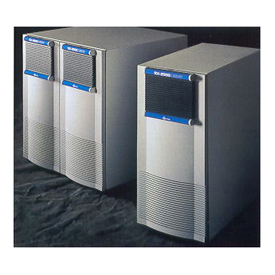 |
The Mitel SX-2000 is a digital integrated communications Private Automatic Branch exchange (PABX) system. The SX-2000 is called an Integrated Communications System because it can switch telephone calls and data connections between terminals and / or computers. The capability to handle both voice and data is one reason why the SX-2000 is economical and flexible. Only one system is needed for both tasks, to connect a telephone and a terminal to the same line, allowing rapid office reorganisation without the need for rewiring. The SX-2000 consists of the following subsystems and equipment:
|
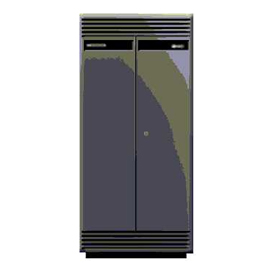 |
Introduced in 9183, the Mitel SX2000SG (SG = Single Group) is a dual processor digital PABX with provision for up to a maximum of 2500 extensions plus 625 trunks. This does not include the additional use of ports for data, Supersets etc. For maximum hardware and software configurations see SX2000. Consideration must also be given to traffic requirements when deciding on overall system configurations. Redundant processors are provided in Digital Service Unit areas, peripheral shelves and main control. Each cabinet has it’s own DC/DC converters requiring 50 volt DC input. These can be supplied from either AC rectifiers, also located in each cabinet or from an external DC supply, which may be provided from an approved power system such as a Power System 2008j. Superset 7 Used for operator consoles. Sometimes used as separate administration terminal or Message Centre. DEC VT 102, 220 or 320 maintenance terminal, may also be used as an administration terminal. |
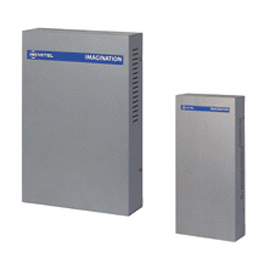 |
Imagination was actually designed by TSC, a company which Mitel later purchased. The Imagination range is now discontinued. There are two systems in the iMAGINATION range, the Mitel iMAGINATION Micro and the Mitel iMAGINATION Series.
SYSTEM FEATURES
|
|
Every call counts when running a business. So why not take your business with you?
Our PABX system have a single number reach which allows you to answer your business calls anytime anywhere...